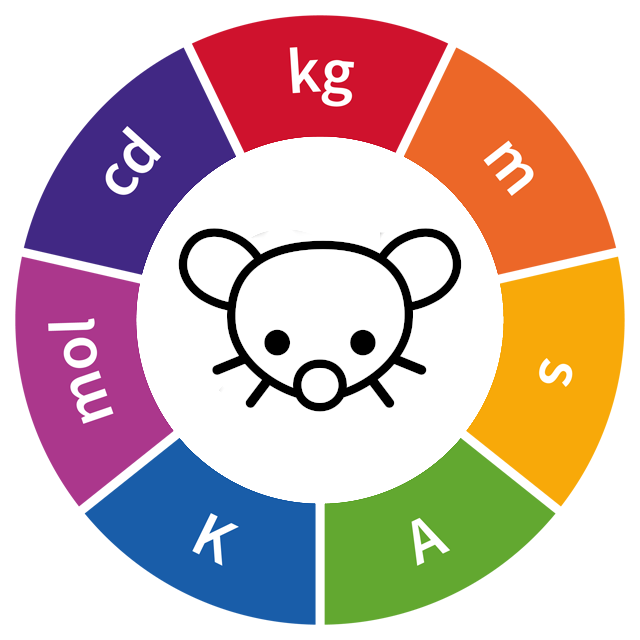If the date format is not YYYY-MM-DD it can fuck right off.
ISO 8601. Unironically the only ISO number I also remember.
I also remember as PHP programming language still won’t do it with this function: DateTimeInterface::ISO8601 DATE_ISO8601 https://www.php.net/manual/en/class.datetimeinterface.php#datetime.constants.iso8601
You need the DateTimeInterface::ISO8601_EXPANDED which can actually accept non compliant strings too.
PHP - wherever you see an intuitive solution it’s wrong or has important caveats.
My favorite thing about this date format is using it in file names. Sorting the files by name also sorts them by date.
Meeting notes 2023-06-29.txt Meeting notes 2023-06-30.txt Meeting notes 2023-07-01.txt
Thi is the way.
Everything is right about it:
- Lexographic sort
- Unambiguous months and days
- Acceptable on any document of record (lab, legal, medical, personal)
- Readable by nearly any culture (even us Americans)
for storing dates it’s awesome, for displaying dates it’s time to teach your programmer how to format shit for humans.
It actually is the best for displaying all-number dates to people as well because no one in their right mind will ever do yyyy-dd-mm.
So if you see the year first, you know the format. When the year is last and you see a date like 03-02-2023, you have to take into account the nationality of the author to know if it’s March 2nd or February 3rd.
But 2023-02-03 it becomes clear that it’s February 3rd.
I can’t even comprehend how dumb this image is.
Doesn’t that make you dumber than the image?
I love the mental gymnastics which have gone into the making of this infographic. Gold!
I thought this post was funny until I read the comments.
I like that every bar has a different scaling.
It’s an imperial log scale
How long do you have to sit on the toilet to produce one of those imperial logs?
You have to NOT sit on the toilet for 3 days
I actually like fahrenheit for weather. 0 is really fucking cold, 100 is really fucking hot.
Both are confusing. Let’s use colours instead:
Red = hot, wear shorts and a t shirt
Blue = cold, grab a jacket
Pretty intuitive without any prior knowledge.
I have always hated this argument. If that were the case, then 50 would be the most comfortable temperature and it’s not. This scale is about 20 degrees off since most everybody prefers a temperature of about 70 F.
Works for Celsius as well. 0°C is damn cold, and 100°C is damn hot weather.
Swede here, 0 C is not particularly cold
This is cursed. I love it
Now this is the kind of shitposting I can get behind.
I actually agree that the metric system has nice round numbers, but this graphic is a hilarious rebuttal to the first one that just draws pictures to make their preferred system look like it fits into the pretty pictures.
Two can play at that game, lol.
Eh… The graph shows
“Inches in 8.33 feet”, and those 3’s will go on forever like 8.333333333333…
Its clearly meant to be a shitpost.
“Base 12” is nice because it is easy to divide into halves, quarters, thirds as whole numbers. The rest is a bit of a mess though, I guess.
Base12 Units would be much more useful if we used Base12 numbers
You are joking, right? Or ha e you actually fallen for the bogus infographic?
Fuck yeah. Because 100 being the temperature of a random woman measured during her menstrual cycle totally makes sense.
Ey! It was the blood temperature of a horse before that, okay?! So it’s not as if there were no improvements made at all! /s
I’m happy with metric generally speaking - except for Celsius when talking about ambient temperature. I will die on that hill. Freezing/boiling point of water is a ridiculous point of reference for temperature as experienced by humans.
Fahrenheit: 0 = really cold; 100 = really hot
Celsius: -17.778 = really cold; 38.333 = really hot
Not to mention that the Celsius grading is too big requiring use of tenths when discussing weather and setting a thermostat…
What? I have never ever had a discussion in my life about tenths of celsius when discussing weather or thermostat. Nobody does that. The units are small enough to be used in majors.
Freezing is excellent point of reference when you think about what effects it has on our lives. When water freezes, roads get frozen. When water freezes, pipes might blow up. When temperature reaches 0 Fahrenheit, nothing happens. Everything is same as 1 fahrenheit, or -1 fahrenheit. Nothing has changed, it is completely arbitrary.
deleted by creator
This is literally all about what you’re used to.
From my “UX” I know that
- < -10 = I can literally feel the heat being sucked from my bones
- < 0 = fucking cold, big coat and gloves
- < 10 = big coat, maybe gloves if you’re feeling soft
- < 15 = light jacket, especially if sitting around a lot
- < 20 = t-shirt weather
- < 25 = t-shirt and a beer garden
- <30 = absolute murder, unless you’re on holiday when it’s great
- 30+ = kill me now
I have no idea what 70F is - because I’ve never used it.
deleted by creator
70% of what?! What I consider hot, living in the north of England, is very different to what someone in Spain, or Nigeria, would consider hot.
Temperature isn’t volume, no one can conceptualise a 70% reduction in temperature because it’s literally not how any one, nor any scale other than Kelvin, considers it.
You can’t, like, grab heat and go “oh yea, there’s less here”.
Absolute clown shoes.
Edit: typos, various shit.
deleted by creator
Temperature above 100 F enter dangerous zones just like below 0 enter dangerous zones.
Except that’s not true, the deadly zones start earlier than that.
A heat-period is defined as day(s) on which a Level 3 Heat Health Alert is issued and/or day(s) when the mean Central England Temperature is greater than 20°C; between June and August 2022, there were five heat-periods that met this criterion.
20C is 68F, 30C is 86F.
While the report does make it clear that these were already vulnerable people who were already expected to die soon - within weeks or maybe months - it was the heatwave that pushed them over the edge.
In the UK, with our brick houses built to absorb and retain heat, and absence of AC, average temps above 20C/68F do kill.
Similarly, it’s reported that two thirds of the deaths in the 2021 Texas storm were due to hypothemia, in a state where houses are also built to shed heat. For the majority of the state, as seen in the article below, the temps were negative C but above 0F. I also think it’s fair to suggest a good many of these people were likely already vulnerable.
https://www.bbc.co.uk/news/world-us-canada-56095479
I absolutely agree that 0F and below temps are even colder, and even more deadly, but to suggest that is where it starts to be deadly is wrong.
Ultimately how humans experience and deal with tempurature has nothing to do with the scale we use to measure it, but what it is compared to what we are used to and how prepared we are to protect ourself against being “too hot” or “too cold”. It’s pretty much a perfect example of subjectivity.
If you prefer to use F than C, or K, or any other method, then go for it. But to try and argue that either method is inheriantly better or superior based solely on subjectivity is a fools errand.
Everything in metric is defined around distilled fresh water. The temp scales between 0-100 for solid/ice and gas/stream, and because water is almost incompressible then weight, quantity and volume all interact as well (1kg of water = 1 litre, 1 metre^3 = 1000kg = 1000litres).
Is that easier? I bake a lot, so not having to measure volume for water and instead being able to use weight as a 1:1 conversion sure makes easier when hydrating mixtures - but my oven being at 200C or ~400F makes no practical difference. Again it’s just what we’re used to.
That said, and I get why they were invented, but using cups, and thus volume, for compressible ingredients like flour honestly makes no sense. But now we’re wildly off topic.
Removed by mod
I’d even say it fucking makes cense!
Thanks! I hate it.
But in all honesty, this is almost like being inside a Canadian’s brain. I have to translate back and forth at work all the time, and even cooking involves converting things back and forth. I have no idea how many drams to a gallon, so I’ll convert ounces to mL, then scale as necessary, and then convert back to US customary because the measuring cups and spoons are labelled in American.
Same, as a Canadian I wish we just had everything in metric instead of 70% of things. If systems of units were money, metric would be paying with dollars and cents, while imperial is paying with sheep and bars of gold.
I also hate that we are loosey goosey with date formats. What day is 07/08/23??? I hate that the US uses MM/DD/YY format but at least they are consistent about it.
That’s either July 8, or August 7th. Depending on… Well. What whoever was writing it meant 😁










